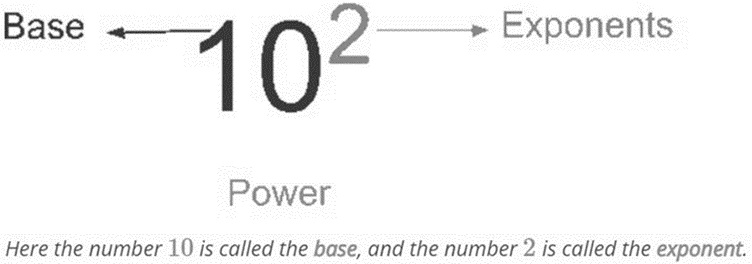- Books Name
- class 8 th Mathematics Book
- Publication
- ReginaTagebücher
- Course
- CBSE Class 8
- Subject
- Mathmatics
Exponents and Powers
Powers
Powers and exponents
1. Power: The power is the product of multiplying a number by itself. It shows how many times the base is multiplied by itself.
2. Base: The base number tells what number is being multiplied.
3. Exponent: The exponent, a small number written above and to the right of the base number, tells how many times the base number is being multiplied.

Law of exponents
1. Product law
According to the product law, the exponents can be added when multiplying two powers with the same base.
an×am= a n+m ,where a≠0 and a, m, n are integers.
2. Quotient law
The quotient law states that we can divide two powers with the same base by subtracting the exponents.
an:am = an/am = an-m
,n>m,a≠0 where, a, m, n are integers.
3. Power law
The power law states that when a number is raised to a power of another power, we need to multiply the powers or exponents.
(an)m=anxm, where a≠0 and a, m, n are integers.
Powers with Negative Exponent
A number with negative exponent is equal to the reciprocal of the number with positive exponent.
That is, a-n=1/a n, here n is an integer.
If the negative number (−1) raised to the negative odd power (−1odd power), then the resultant value is negative (−1).
If the negative number (−1) raised to the negative even power (−1even power), then the resultant value is positive (1).
Rules for the exponent 1 and 0
Exponent with 1: For any number when it is rises to the power of 'one'(1), it equals itself: a1=a. where a≠0
Exponent with zero: For any number when it is raised to the power of 0 it is always equals to the number 1: a0=1.

 ReginaTagebücher
ReginaTagebücher
